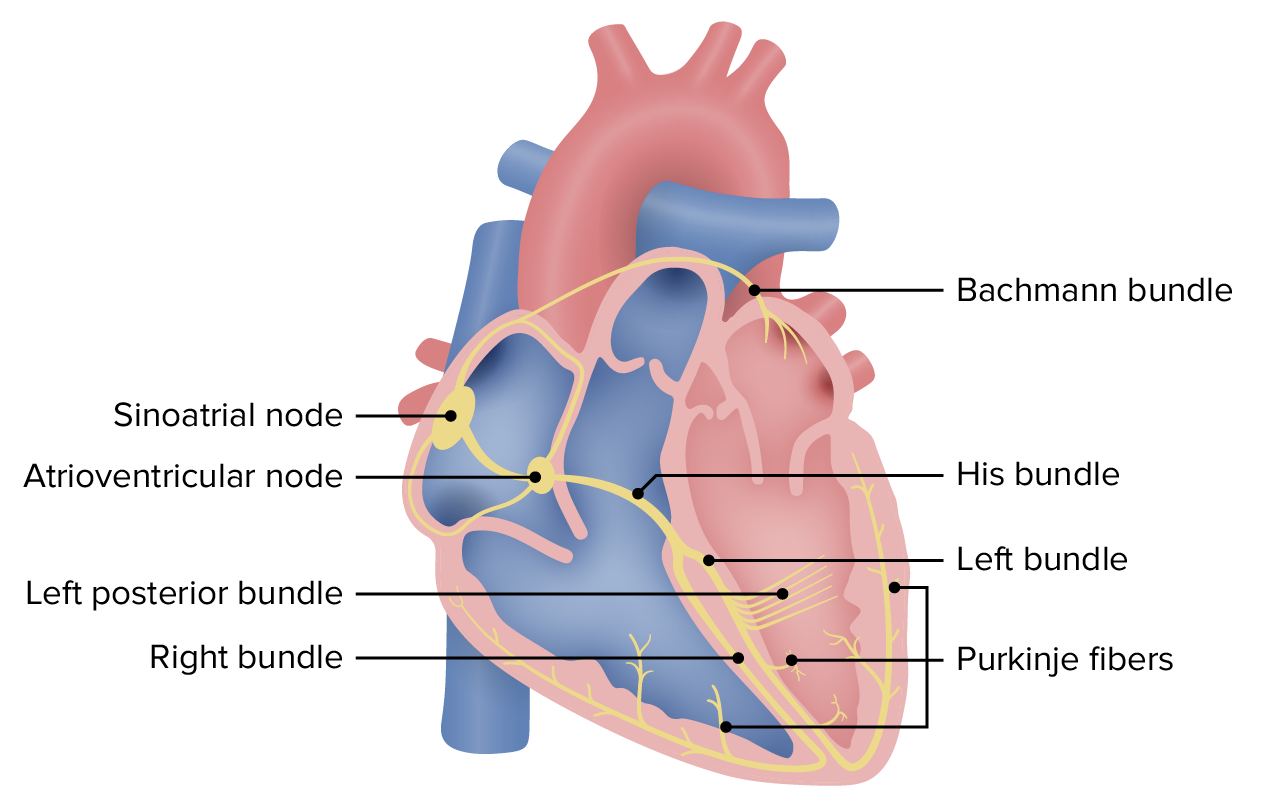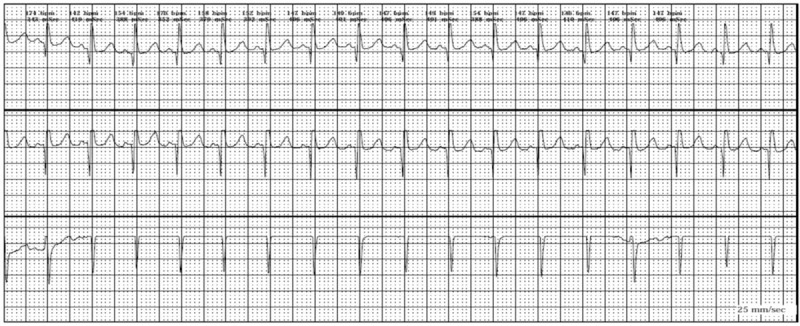Playlist
Show Playlist
Hide Playlist
ECG of Supraventricular Tachycardia
-
Slides Supraventricular Arrhythmias.pdf
-
Download Lecture Overview
00:01 Now a sustained run of atrial premature beats is often called supraventricular or atrial tachycardia. 00:08 It's a tachycardia developing in the atrium or above the ventricle supraventricular. 00:14 Often the cause is a so-called recurrent circular depolarization wave that's running around the atrium. 00:23 And often this is because of little areas of scarring or fibrosis in the atrium and so, you get an impulse that instead of just normally going down the system like this, it starts doing this running around within the atrium and periodically sending beats down through the AV node. 00:38 So, this recurrent circular depolarization wave is often called a circus movement. Why? Those of you who have been to the circus know that there are rings down on the ground floor of the circus and often the horses come in and go around and around and around in the ring so the circular movement is like the horse going around and around and around in the circle. 01:00 And what happens is this is a so-called re-entrance to polarization. 01:06 That is, instead of going normally forward, it keeps re-entering within the atrium. 01:12 Around and around and around and sends periodic beats down through the AV node usually resulting in a fast rhythm. 01:21 So here we see a supraventricular tachycardia. 01:25 This is very nice in that you can see the abnormal P wave. First of all, look at the heart rate. 01:31 The heart rate is extremely fast, a 180 beats per minute. 01:34 You can calculate that out. Remember if there were two big boxes in between those two beats, that would be 150. 01:42 If there was only one box, that would be 300. 01:44 So, you can see this when you calculate it out with a ruler or doing the math in your head. 01:52 The heart rate is 180/min. 01:53 Notice there's a narrow QRS and look, first of all, you see the QRS then there's a T wave then there's an abnormal P wave, then there's QRS. 02:04 Then there's a T wave, an abnormal P wave, and a QRS and so forth. 02:07 So, this is a supraventricular tachycardia almost certainly due to a circus movement in the atrium. 02:13 Sometimes the circus movement also involves the upper part of the AV node and there are many different kinds of circus movements. 02:20 That's of importance to the cardiac electrophysiologist that I like to fondly call them the cardiac electricians because they can oblate this pattern in the atrium and cause these atria to disappear.
About the Lecture
The lecture ECG of Supraventricular Tachycardia by Joseph Alpert, MD is from the course Electrocardiogram (ECG) Interpretation.
Included Quiz Questions
Which of the following best describes the etiology of supraventricular tachycardia?
- A recurrent circular depolarization wave within the atria
- A block of the AV node
- An accessory pathway of electrical activity from the SA node to the ventricles
- A right bundle branch block
- Scarring or fibrosis of the ventricles
Which of the following is characteristic of supraventricular tachycardia?
- Short PR interval
- Recurrent depolarization within the ventricle
- Presence of a delta wave
- Wide QRS
- P waves with a "sawtooth" shape
Customer reviews
5,0 of 5 stars
| 5 Stars |
|
5 |
| 4 Stars |
|
0 |
| 3 Stars |
|
0 |
| 2 Stars |
|
0 |
| 1 Star |
|
0 |





